
The past month has been a better one for stock-markets, with US and global equities managing a decent bounce from their mid-October cycle lows.
US equities have lifted 5.2%, although stocks have given up some of their October gains at time of writing. Australian equities rose 7.5% in October and, as of 3 November, sit 7.9% below their 2022 starting point (versus 21% for the US).
The catalyst for the recent bounce in stocks appears to be a combination of 2 things. To start, a build-up in negative sentiment/positioning through late-September and early-October set the scene for a bounce, despite a worse-than-expected mid-October inflation read in the US.
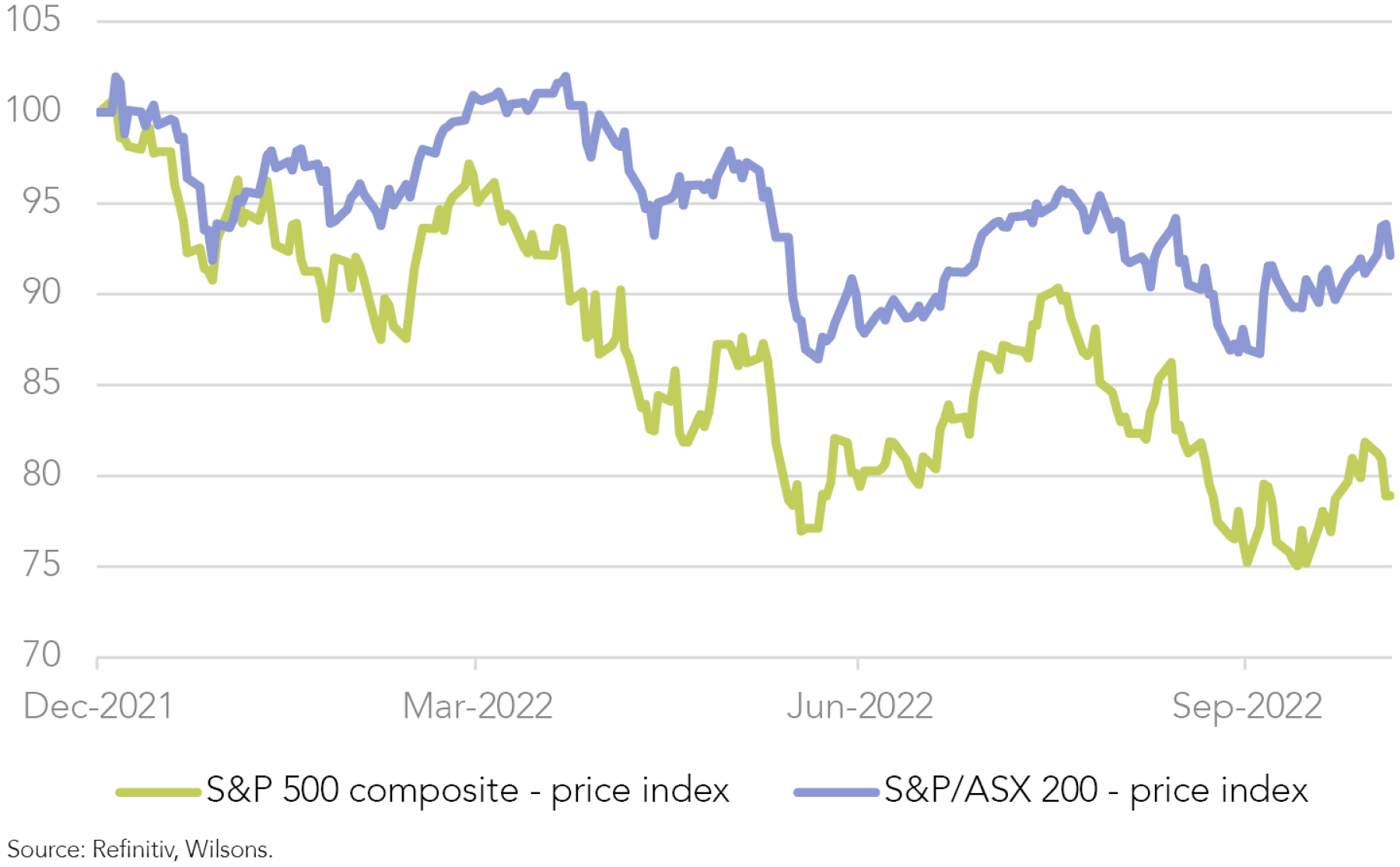
More recently, hopes of a “partial pivot” from the Fed appear to be behind the rally. From this perspective, the Fed’s message this week was still on the hawkish side of market hopes.
The Fed Pivots the Wrong Way
As expected, the Fed delivered another outsized 75bp rate hike. This brings the cumulative increase in the Fed funds rate to 375 basis points (bps) since the start of the tightening cycle in March, with the Fed’s new target cash rate range sitting at 3.75-4.0%. This compares to Australia’s freshly lifted policy rate of 2.85%.
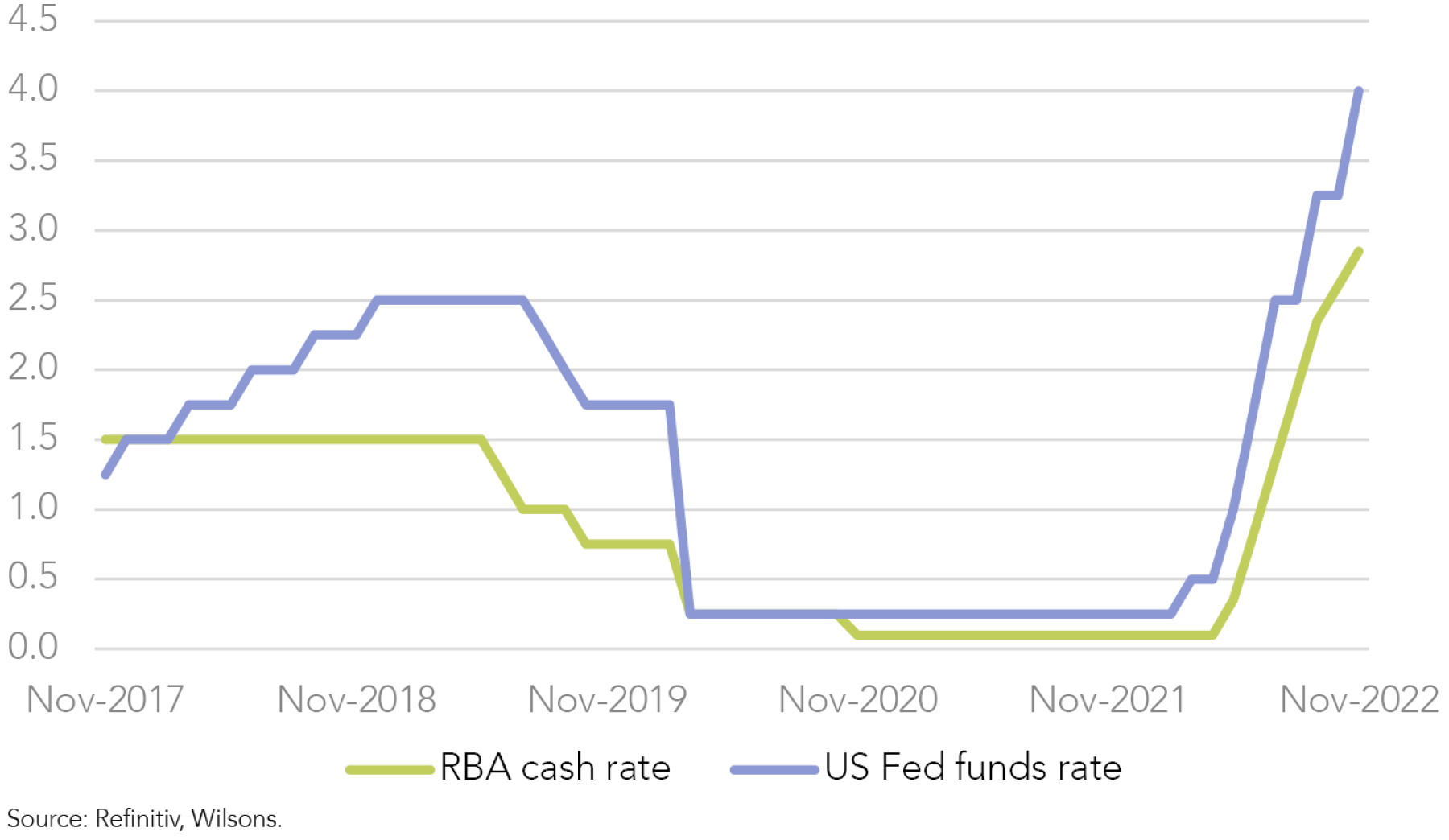
The Fed policy statement was tweaked from September to include a new sentence, stating that, “In determining the pace of future increases in target range, the Committee will take into account the cumulative tightening of monetary policy, the lags with which monetary policy affects economic activity and inflation, and financial developments.”
Investors initially viewed this addition as a dovish pivot. Equities rallied and bond yields fell as soon as the statement was released. However, the equity and bond market rally proved short-lived as the Fed’s post-meeting press conference unfolded.
In the press conference, Chair Powell elaborated on the addition to the statement by indicating that the lagged effect of policy tightening becomes more appropriate as policy becomes more restrictive. However, he also noted that it is still premature to be thinking about pausing. Importantly, he reiterated that there is still “a ways to go” to get rates to sufficiently restrictive territory.
Powell also noted that the ultimate peak level of rates could be higher than previously expected. The market’s previous peak rate expectation was 4.75-5.0%. The market now appears to be partially pricing another 25bp hike at the Fed’s early May meeting to potentially take rates above 5%, versus previous expectations for a March 2023 peak at just under 5%.

With no signs of a genuine pivot, and the potential for a higher peak interest rate, stocks sold off sharply and bond yields ultimately ended the day moderately higher.
The key takeaway for investors is that the Fed remains committed to continue tightening monetary policy to tame inflation. It is unlikely the Fed will let up until signs of lower inflation and labour market softening are clearly visible.
On a more positive note, while the Fed remains hawkish, US bond yields appear to be finding a peak, with US 10-year yields easing back in recent weeks from cycle highs. The yield curve remains significantly inverted, with 2-year yields at cycle highs.
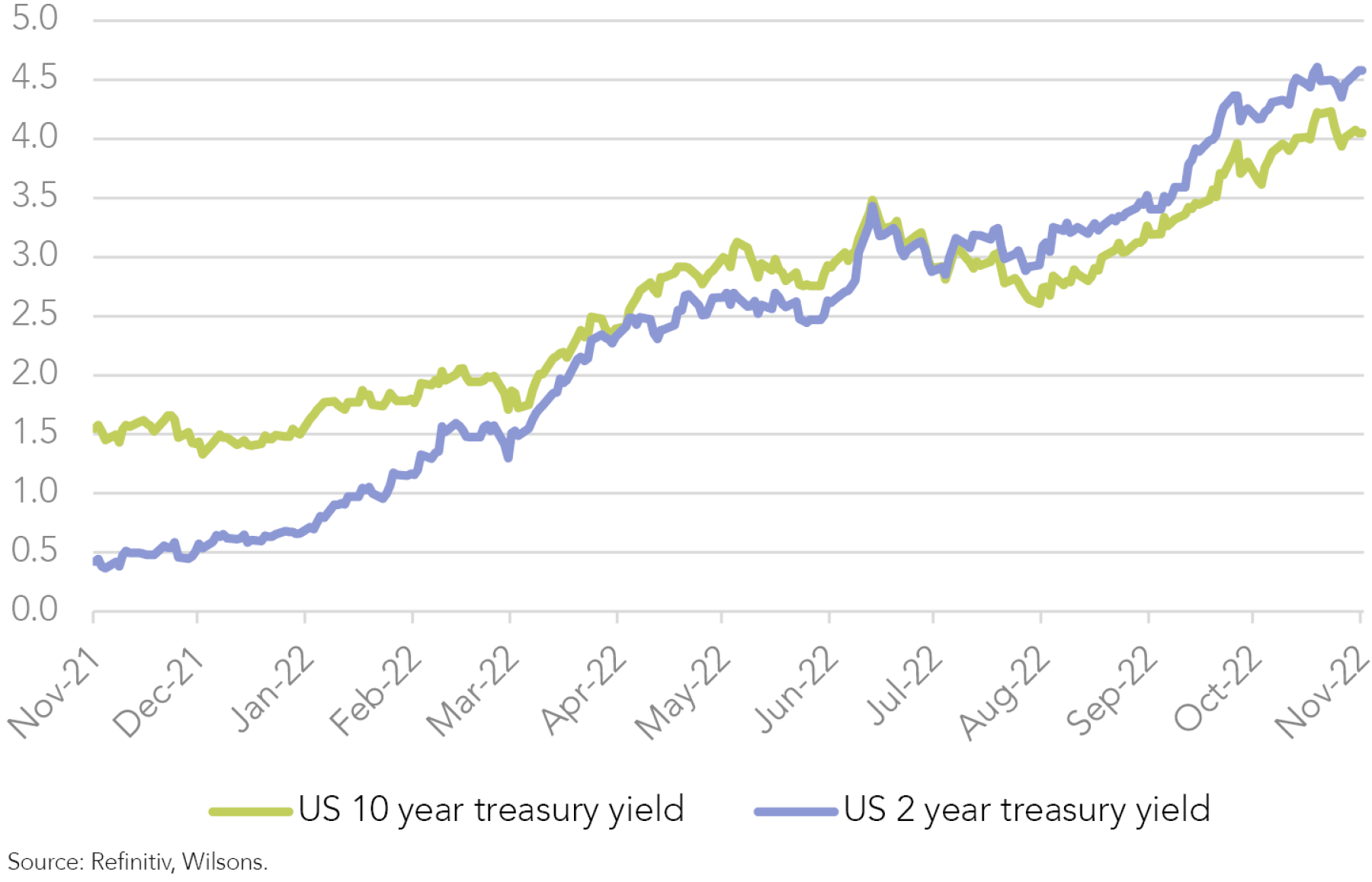
Australian 10-year bonds have rallied harder than US yields in recent weeks, which is interesting in the context of Australia’s recent higher-than-expected inflation print and data showing ongoing economic resilience. This is possibly because of our own central bank’s more dovish take on the monetary policy task.
Just another Bear Market Rally?
Whether the US equity rally fades back towards recent lows yet again likely rests on US inflation data and how it impacts the Fed’s monetary policy cycle.
The Fed has signaled it is open to reducing the size of rate hikes, yet in the same breath they also suggested they are still a fair way from pausing.
The market is pricing an additional 100 to 125 bps of tightening, with the rate hike cycle potentially extending out until May next year. This is not much of a pivot in our view.
Ultimately, how much the Fed tightens over the coming 6 months, at what level the cash rate peaks and when the Fed becomes ready to ease policy will come down predominantly to the path of inflation. The next inflation read comes out this week on 10 November. The market expects some moderation relative to recent readings, however, the trend of late has been for inflation to surprise to the upside.
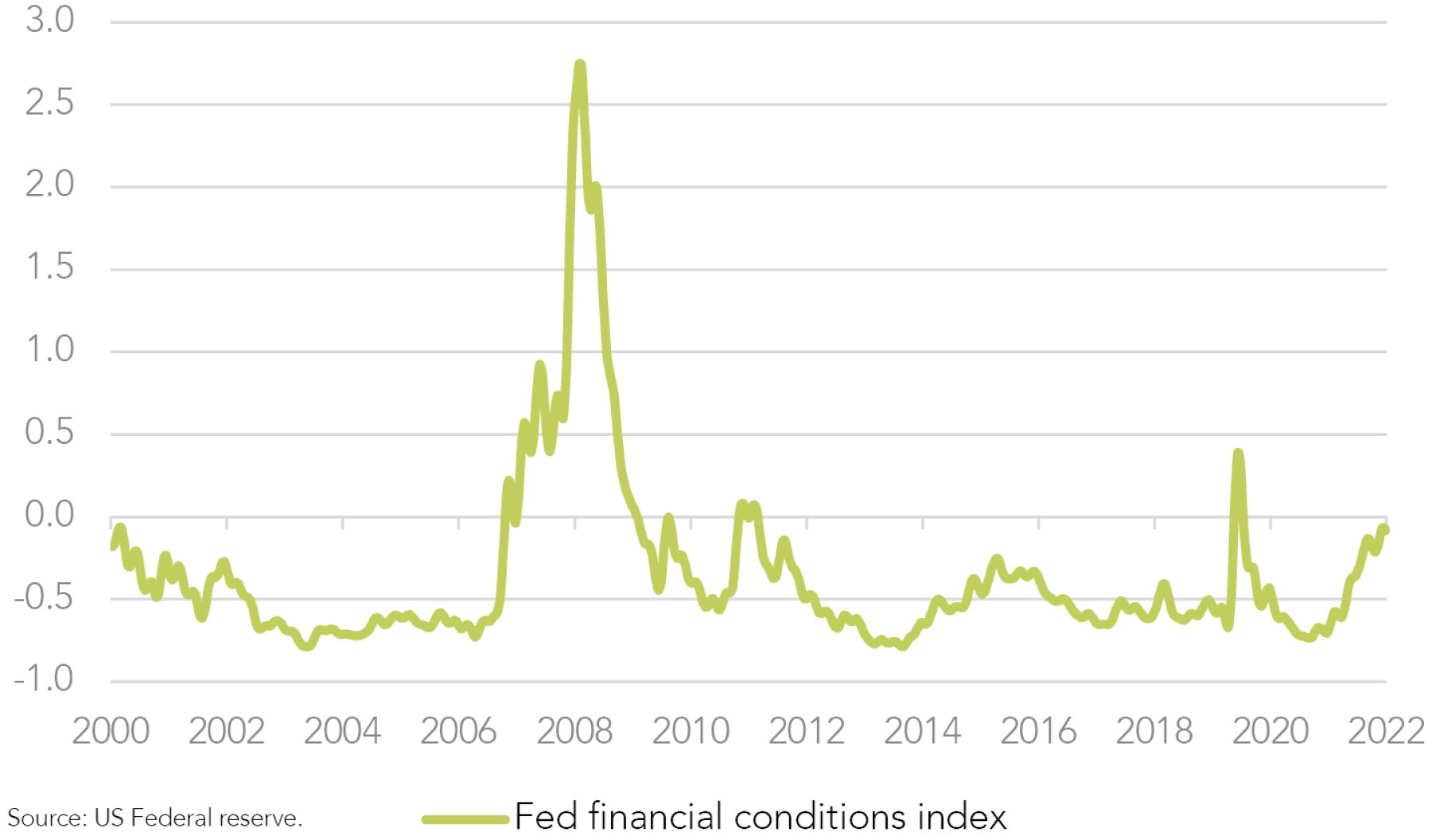
Leading Inflation Indicators Suggest some Relief Is Coming
Leading indicators of inflation are providing some encouragement to the view that inflation is set to moderate significantly over the coming year. Supply chains are improving, commodity price inflation has eased and manufacturers are reporting much less input cost pressure. However, these encouraging trends are yet to drive a noticeable downshift in broad-based measures of inflation.
Service sector inflation, which is significantly larger than the commodity or manufactured goods components of inflation, is proving very sticky. Easing housing costs and wage growth are the keys to lower service sector inflation. The housing market is clearly cooling but this will take some time to show up in the slow-moving survey-based inflation figures. Wages are also showing some tentative signs of easing, but the labor market remains too tight for the Fed’s comfort.
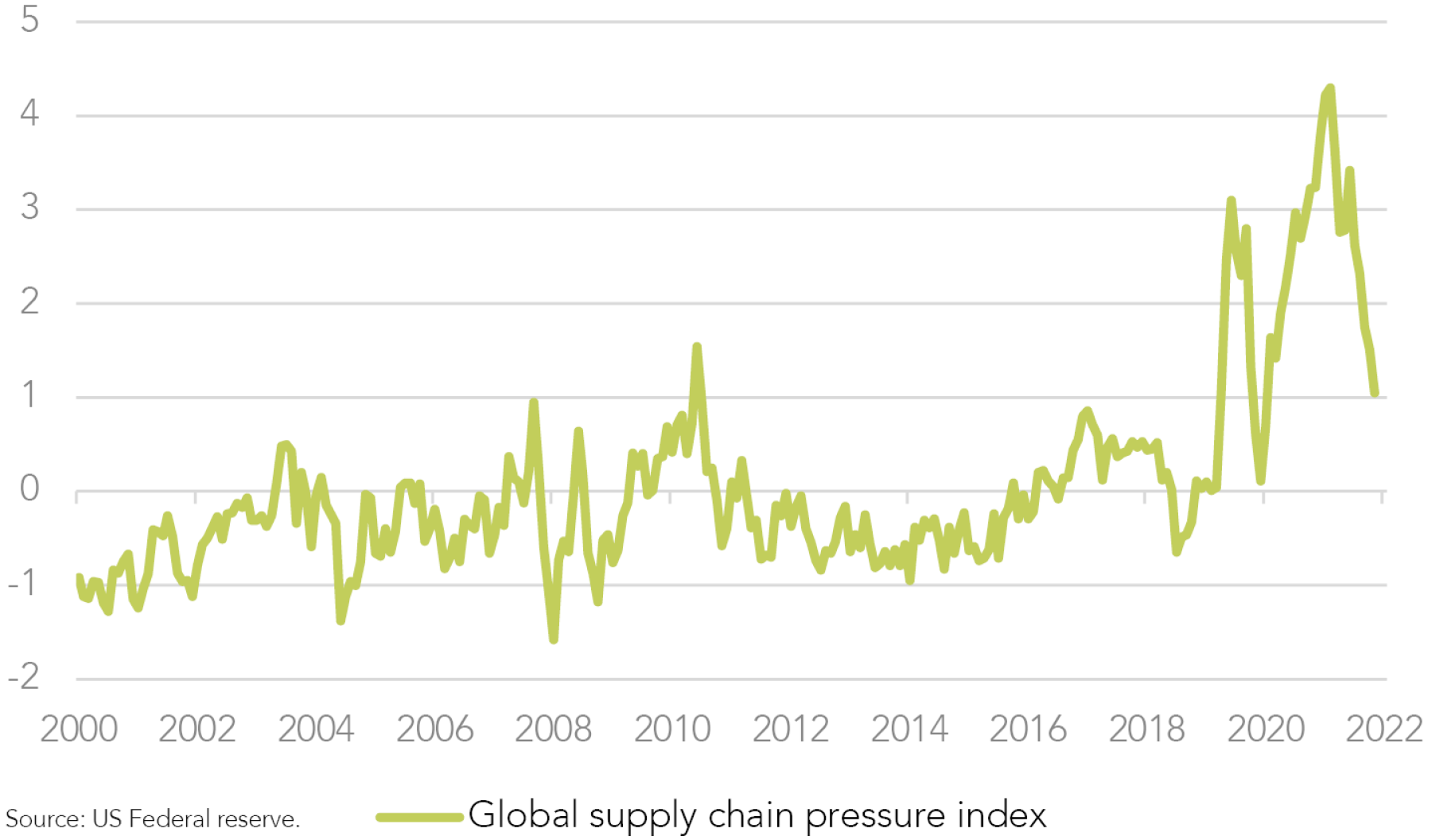
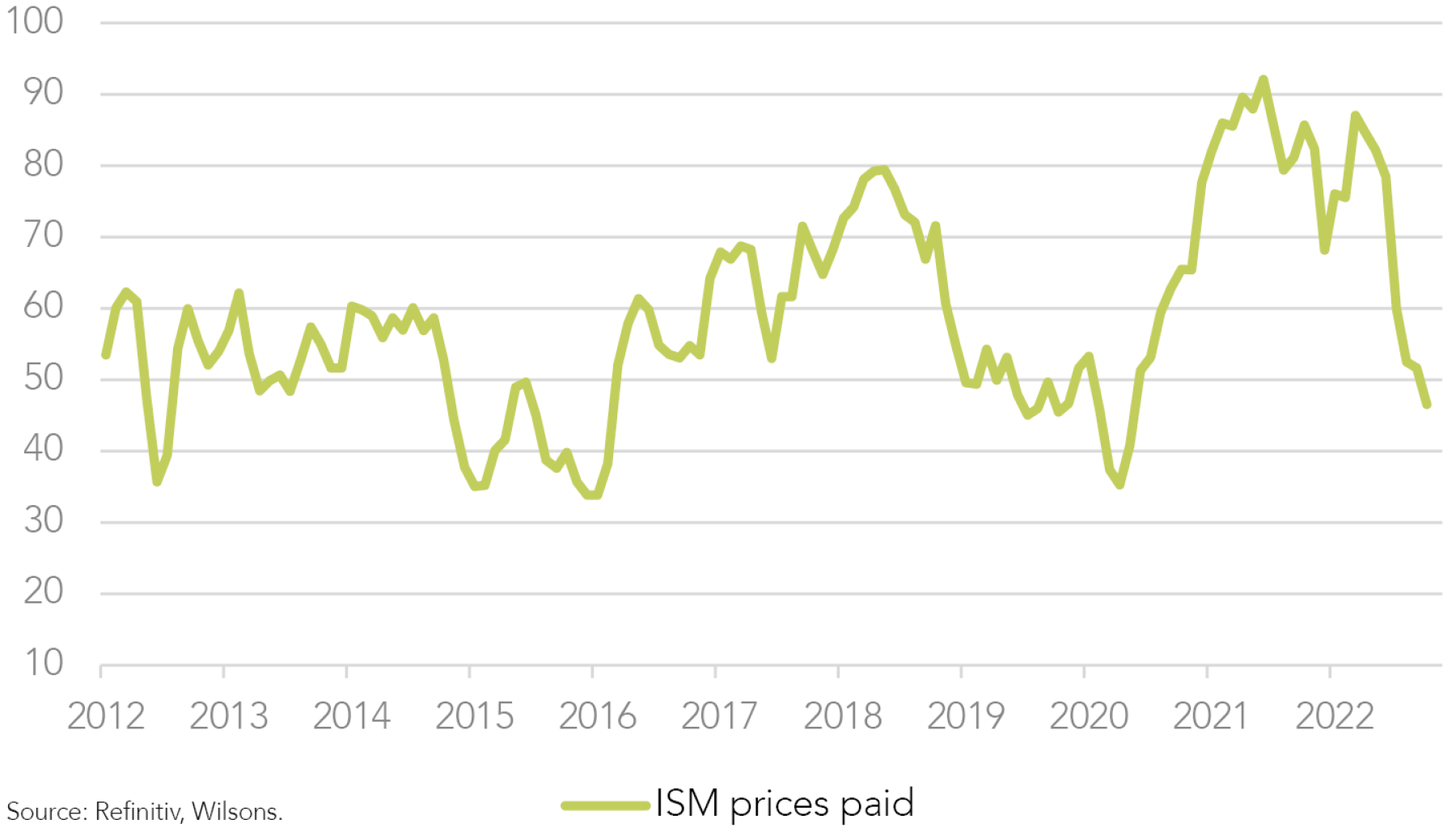
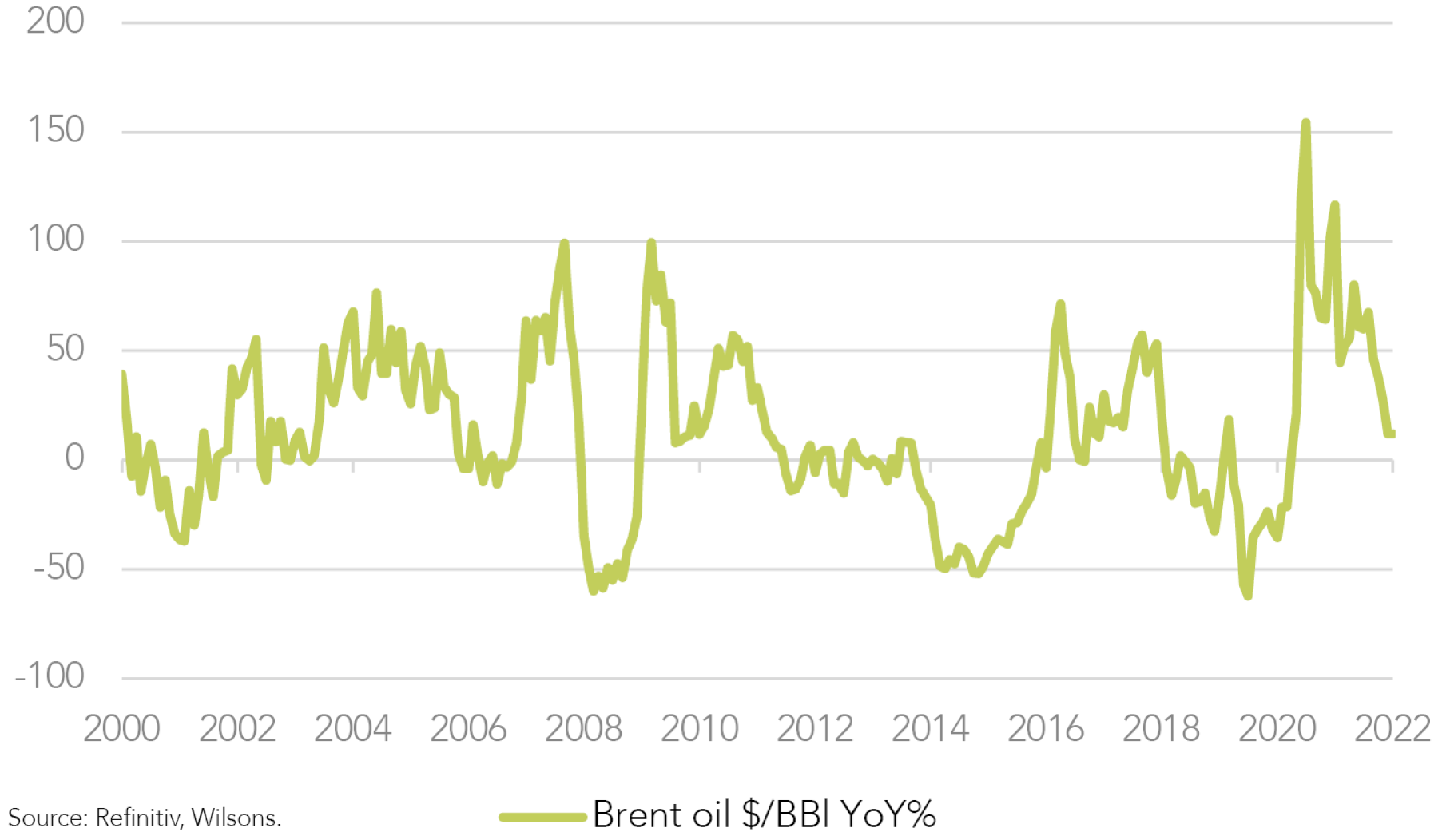
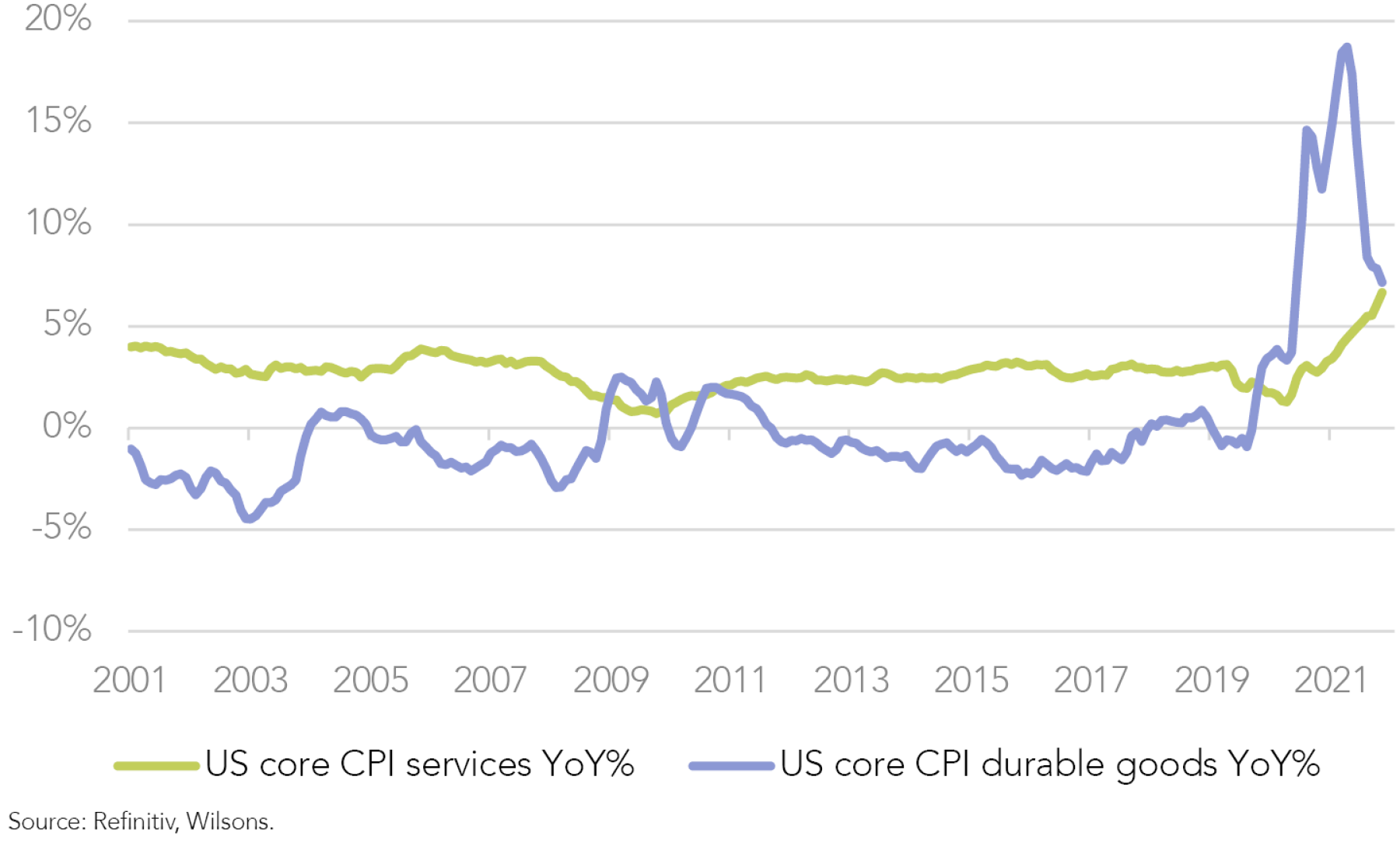
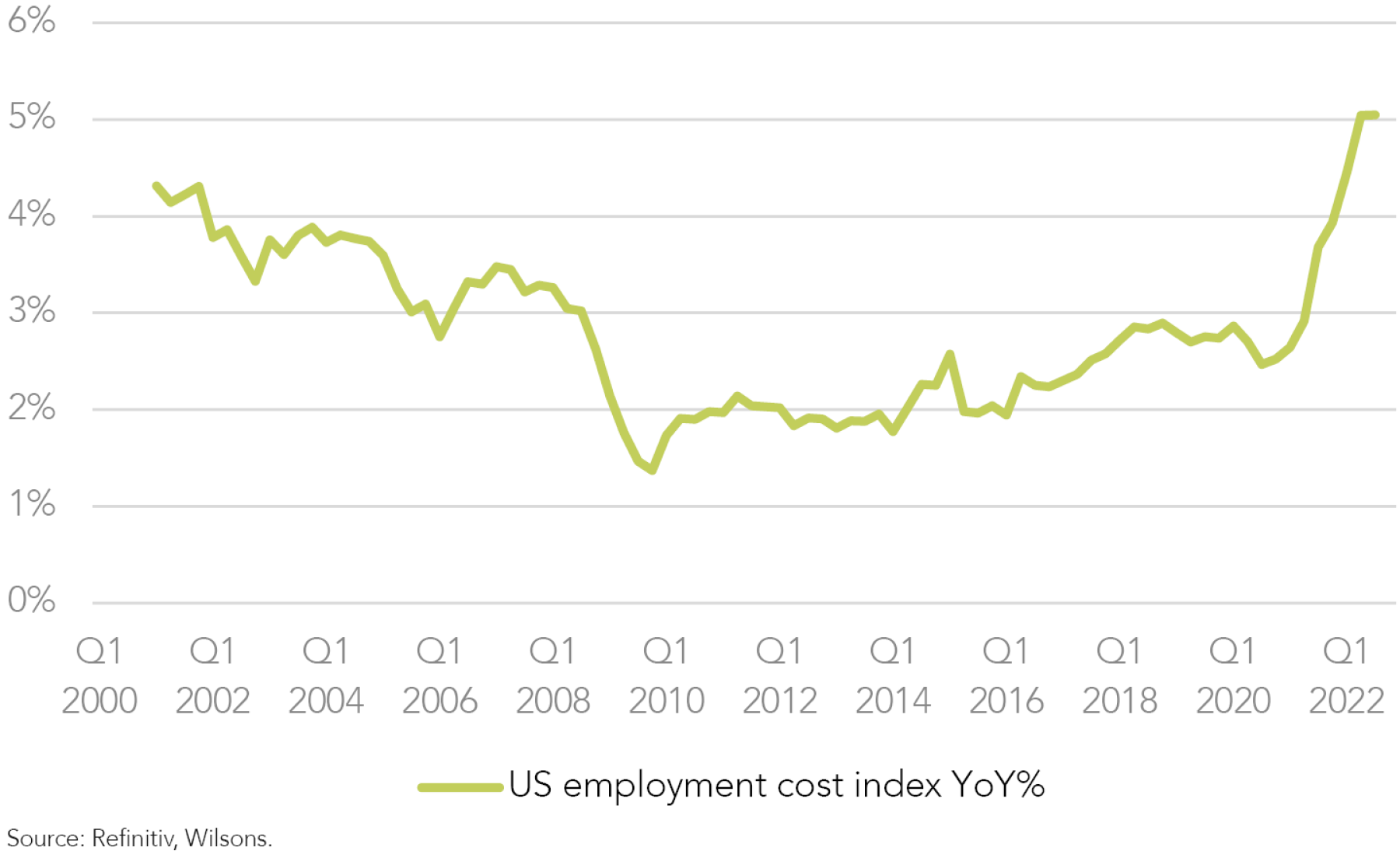
We think mounting evidence that US economic growth is slowing in an orderly fashion is encouraging, but the unusually tight state of the US labor market has the Fed on edge.
The Fed is aware that policy works with a lag but appears to have only limited faith in its forecasting ability. So, actual reads on inflation and the labor market are likely to be critical to what the Fed does over the next 6 months.
Volatility to Continue unless Evidence of Ebbing US Inflation Emerges
This tightening policy backdrop makes it difficult for stocks to make sustainable gains, at least until signs of an inflation downswing become clearer. So, while an inflation downswing remains our base case for the coming year, markets will likely remain volatile until this materializes. Moreover, we cannot rule out the possibility that the Fed overtightens and pushes the US economy into a significant recession, despite the US economy’s resilience so far. This leaves us cautious into year end (in the absence of better inflation figures) but neutral on stocks on a 12-month timeframe, based on the view that inflation pressures will ultimately ease significantly.

Written by
David Cassidy, Head of Investment Strategy
David is one of Australia’s leading investment strategists.
About Wilsons Advisory: Wilsons Advisory is a financial advisory firm focused on delivering strategic and investment advice for people with ambition – whether they be a private investor, corporate, fund manager or global institution. Its client-first, whole of firm approach allows Wilsons Advisory to partner with clients for the long-term and provide the wide range of financial and advisory services they may require throughout their financial future. Wilsons Advisory is staff-owned and has offices across Australia.
Disclaimer: This communication has been prepared by Wilsons Advisory and Stockbroking Limited (ACN 010 529 665; AFSL 238375) and/or Wilsons Corporate Finance Limited (ACN 057 547 323; AFSL 238383) (collectively “Wilsons Advisory”). It is being supplied to you solely for your information and no action should be taken on the basis of or in reliance on this communication. To the extent that any information prepared by Wilsons Advisory contains a financial product advice, it is general advice only and has been prepared by Wilsons Advisory without reference to your objectives, financial situation or needs. You should consider the appropriateness of the advice in light of your own objectives, financial situation and needs before following or relying on the advice. You should also obtain a copy of, and consider, any relevant disclosure document before making any decision to acquire or dispose of a financial product. Wilsons Advisory's Financial Services Guide is available at wilsonsadvisory.com.au/disclosures.
All investments carry risk. Different investment strategies can carry different levels of risk, depending on the assets that make up that strategy. The value of investments and the level of returns will vary. Future returns may differ from past returns and past performance is not a reliable guide to future performance. On that basis, any advice should not be relied on to make any investment decisions without first consulting with your financial adviser. If you do not currently have an adviser, please contact us and we would be happy to connect you with a Wilsons Advisory representative.
To the extent that any specific documents or products are referred to, please also ensure that you obtain the relevant disclosure documents such as Product Disclosure Statement(s), Prospectus(es) and Investment Program(s) before considering any related investments.
Wilsons Advisory and their associates may have received and may continue to receive fees from any company or companies referred to in this communication (the “Companies”) in relation to corporate advisory, underwriting or other professional investment services. Please see relevant Wilsons Advisory disclosures at www.wilsonsadvisory.com.au/disclosures.
